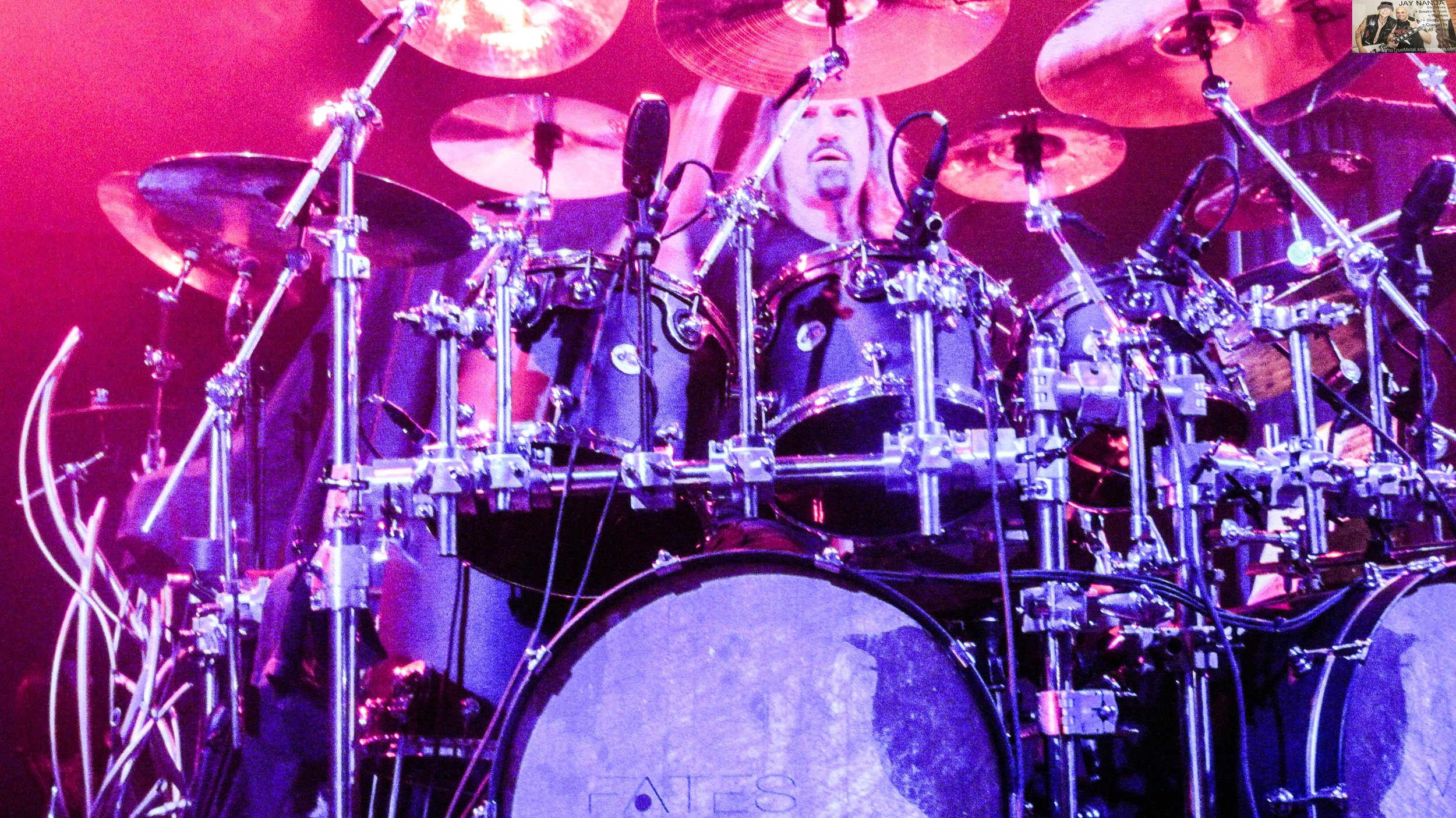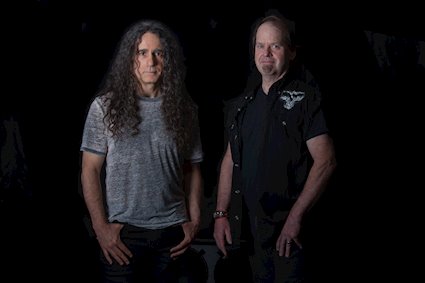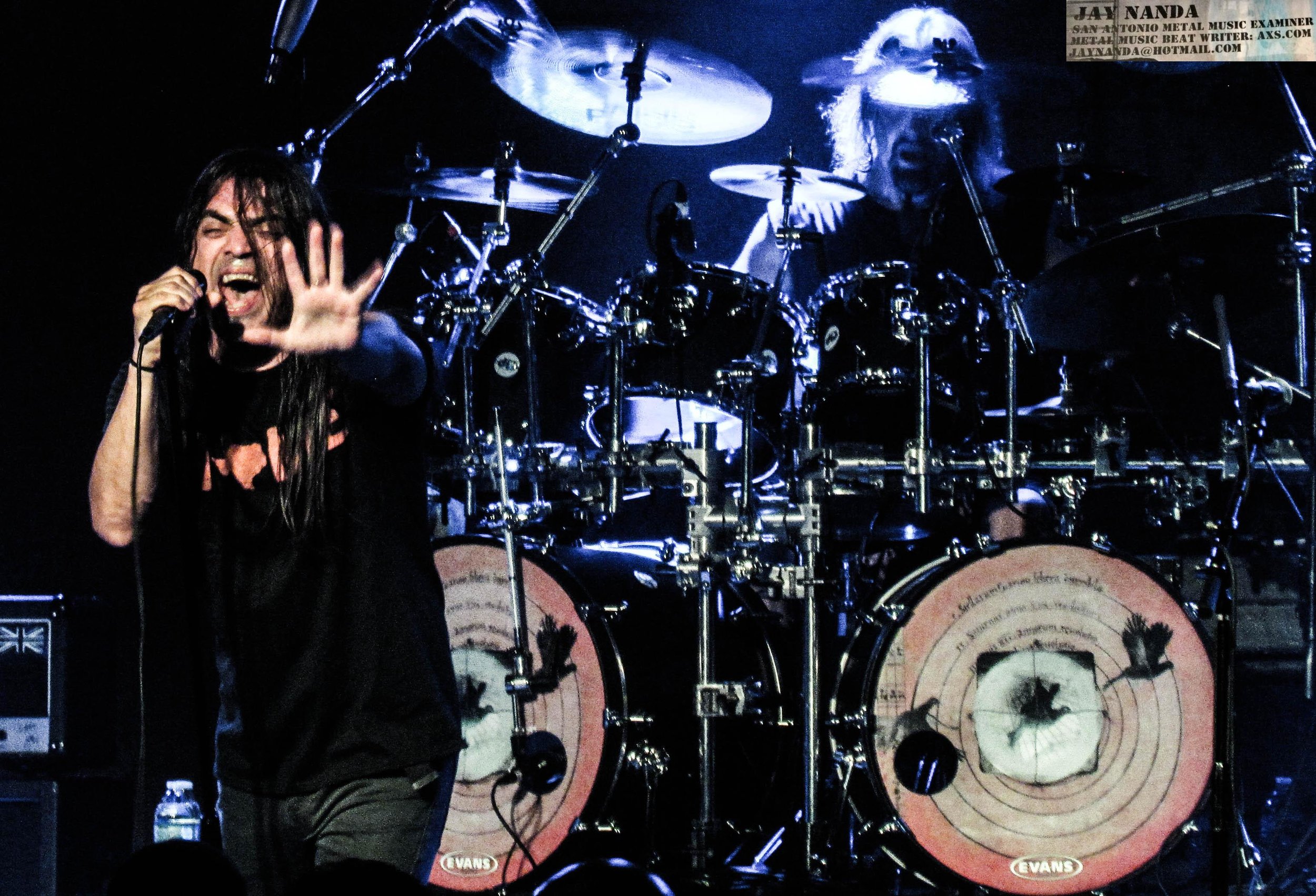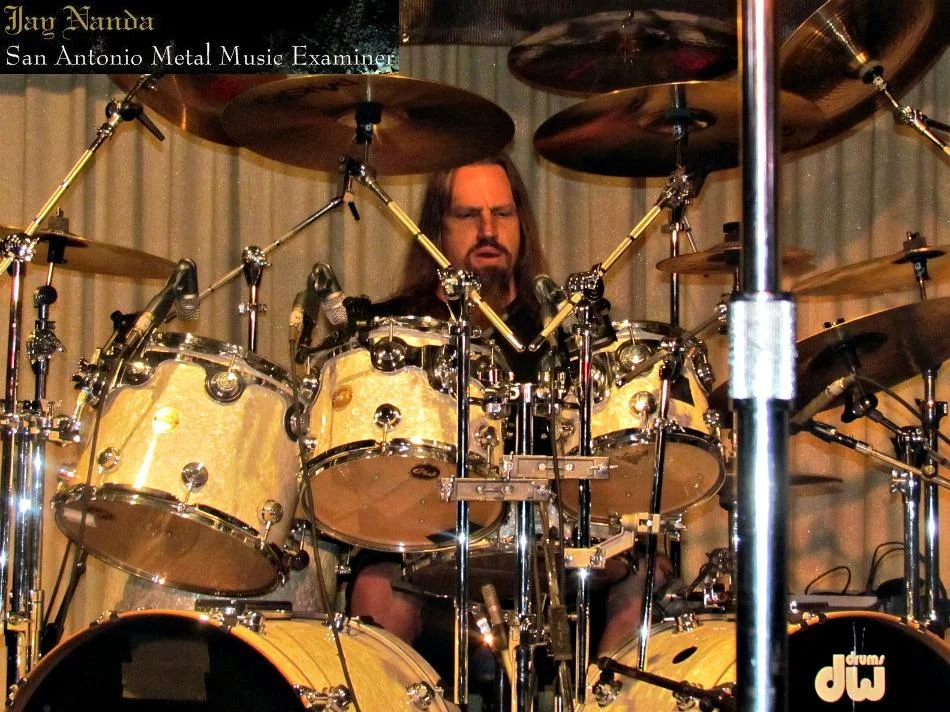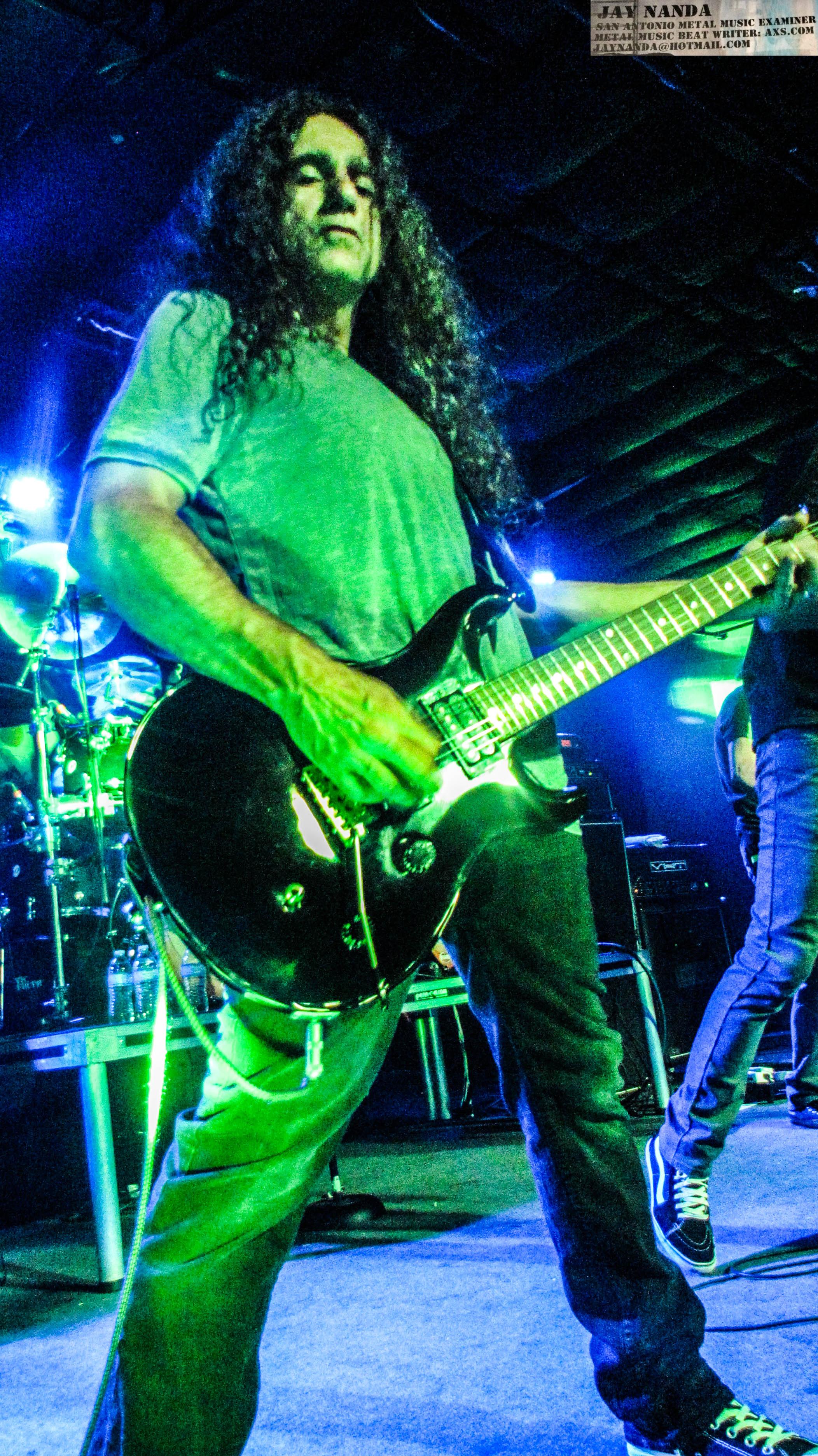As the most dedicated members of San Antonio’s and South Texas’ metal community are undoubtedly aware, one of their own is the drummer for several acts. Bobby Jarzombek has put his stamp on Fates Warning, the solo bands of former Skid Row vocalist Sebastian Bach and Judas Priest singer Rob Halford and is a former member of Riot and Spastic Ink. Just to name a few.
Mostly splitting time nowadays between Fates Warning and Bach’s group, Jarzombek also more than dabbles in the Fates Warning spinoff side project Arch/Matheos, the duo featuring Fates Warning founder and guitarist Jim Matheos and original vocalist John Arch. Jarzombek played on the project’s entire six-song, 55-minute progressive metal masterpiece Sympathetic Resonance in 2011. While Fates Warning toured behind 2013’s Darkness in a Different Light and just ended another tour in support of 2015’s Theories of Flight, this time opening for Queensryche including a March 22 stop at the Aztec Theatre (coverage here), Arch/Matheos consequently was put on the back burner.
Until now.
Arch/Matheos will release Winter Ethereal on May 10 via Metal Blade Records. This time, Arch and Matheos employed the services of various former and present Fates Warning musicians and a couple of guests, as Arch discussed among several topics with Alamo True Metal on Monday during Part 1 of the Arch/Matheos breakdown (listen here).
Jarzombek, who plays on first single and video “Straight and Narrow” (watch below) and “Wrath of the Universe” on the nine-song offering, again was asked to drum on the entire album. In essence, his answer paved the way to the variety of musicians that appear on it.
“The reason it was done that way, originally — and this is an important fact — what happened was Jim approached me about playing on the whole thing like when we did Symphathetic Resonance,” Jarzombek told ATM moments after the Arch interview. “And I said, ‘Man, I don’t have time to play on the whole thing. I really don’t. You know, learning the songs, tracking, editing and all that stuff myself. And so I said, ‘I don’t have time for it, but I’ll help you look for a drummer.’ I started sending him video clips of guys and recommending guys. He was at the same time sending me videos of guys: ‘what do you think of this guy?’ ”
The splitting of duties allowed each guest drummer, which included Thomas Lang and former Fates Warning backstopper Mark Zonder and bassist — current Fates Warning member Joey Vera, former member Joe DiBiase and current Testament bassist Steve DiGiorgio — to add their own style to the record, giving it a different flavor and feel compared to Sympathetic Resonance.
“And it ended up being that a couple of guys could only do a portion of the record,” Jarzombek said. “And (Matheos) said, “The thing is, that might be kind of cool, get a couple guys to play on different songs. It’s not really a band, it’s a project, and people know it’s a project.” And I said, ‘Well, if you can get some guys to play on a song or two, I’ll play on a song. Then I go, ‘Well, I’ll play on two songs.’ And it turned into this weird sort of a bunch of different guys.” Then Jim was like, ‘Well, since you’re the veteran of this thing, you can pick the songs you want to play on. And I picked ‘Wrath of the Universe,’ and he goes, ‘I got this other one that I haven’t written yet. But I kind of have an intro and this and that, and that ended up being ‘Straight and Narrow.’ That was the last song he wrote. He said, ‘I think that’ll be good for you because it’s heavy and has double bass.’ That song sort of suited me well. That’s how it all came to be.”
The video shoot for “Straight and Narrow,” which Arch also spoke about in Part 1, presented its own challenges for the other members given that Fates Warning was on tour at the time.
“We had a headlining show on the Queensryche tour in Fayetteville, and Jim said, ‘It’s close enough to John, and we’ll do it in the morning and have the crew set up everything early,’ “ Jarzombek said. “We shot it before Fates Warning did our soundcheck. Oh, what a day!”
In addition to Jarzombek, Fates Warning of course has other San Antonio ties given that vocalist Ray Alder, who replaced Arch with the 1988 album No Exit, is from here and continues to have family in the Alamo City though he spent many years living in California and now does so overseas. Jarzombek and Matheos are the only members of Fates Warning and Arch/Matheos who steadily work with both vocalists, giving Jarzombek a unique perspective on both. Not only from his point of view in general but also of his interpretation of the dynamic between both vocalists.
“It’s weird because I sort of grew up with the band as a fan or listener with the John Arch stuff, the first three records, that era,” Jarzombek said. “That’s what I knew what Fates was. But I never got to play with them at that point. When Ray came out with Parallels and all that, obviously that was the most successful time of the band. And then when I joined the band, Ray was in the band obviously, in 2007. And I knew Ray from San Antonio and that whole thing. Me and Ray are good friends, we’re close on the road. I would say Ray is the guy I hang out with more than anyone in the band.”
Jarzombek had not met Arch until it was time to do the Sympathetic Resonance album. But it didn’t take long to draw a parallel, if you will, between the two singers from a drumming perspective.
“Singing wise, I don’t look at it really any different, you know, as far as who the singer is,” Jarzombek said. “I started learning some of the songs without vocals on Sympathetic Resonance. And then when John came in and sang the parts, sections were longer, something else thrown in, a few little bars. Some kind of ascending or descending pattern coming up or down. He kind of changes stuff when he goes in the studio or when he starts writing lyrics in kind of how he wants to fit things in.
“So that sort of was different for me than Ray where sometimes, when Jim sends me a song and there’s no vocals yet, it stays pretty much to the structure of the song. Even songs like ‘Firefly,’ I kind of had something when I worked that out. And it made sense to me. But then when the vocal came out, and the way Ray sang that song, I started changing the dynamics of my playing. Like how open my hi-hat is, whether I’m playing crash right. It changes with Ray more so because with the way he sings, there’s a little bit more emotion or something in it that makes me play a little different hearing his vocal. Which is kind of a cool thing. I think more so with John, I’m sticking a little closer to the parts that I had, but the sections do change. That’s only one example I can think of. Those things stick out to me.”
